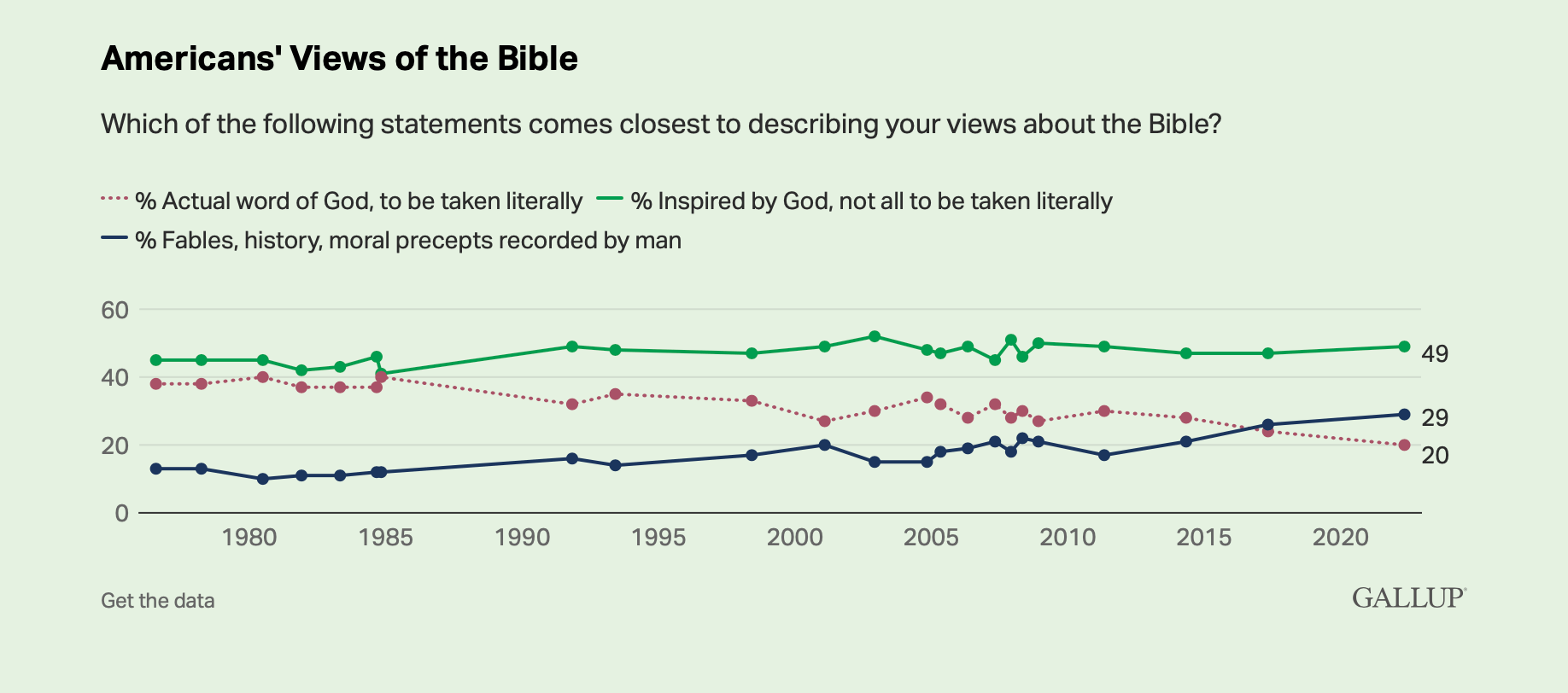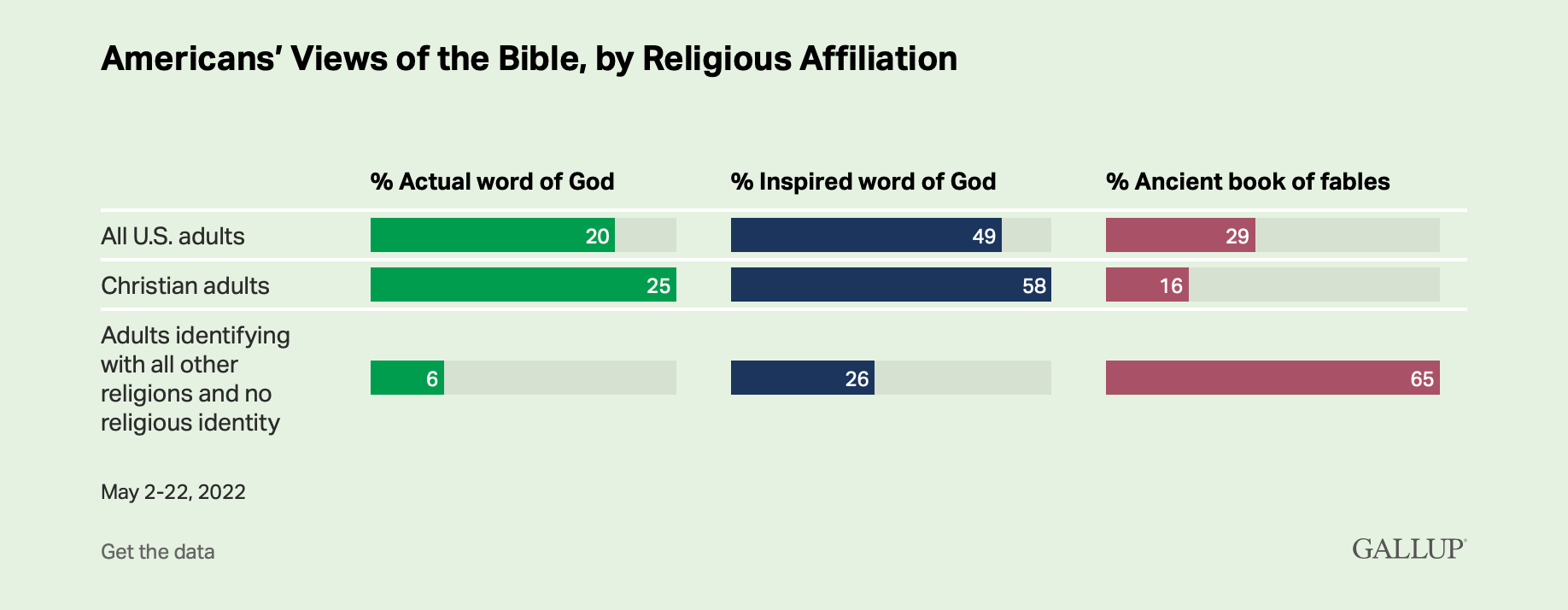So I ran across an interesting Pew article the other day.
The piece was titled, “Fewer in U.S. Now See Bible as Literal Word of God”. Unfortunately, it’s mostly bad news, but after I took a deeper look, there’s actually some encouraging notes that I want to address.
The poll asked the question,
Which of the following statements comes closest to describing your views about the Bible?
The options…
- Actual word of God, to be taken literally
- Inspired by God, not all to be taken literally
- Fables, history, moral precepts recorded by man
Here’s how Pew respondents have answered over time.

If we look back to 1980, 40% of Americans said the Bible is the “actual word of God, to be taken literally,” (red line). Today, that number has fallen to just 20%.
Sounds grim, and the Pew title reflected that.
However, there is a minor bright spot here. In 1980, 45% of Americans said the Bible is “inspired by God, not all to be taken literally,” (green line). Today, that number rose to 49%.
So overall, we see a 16% shift away from Scripture as the source of God’s Divine.
Pew ended up breaking down the data a bit more. I mean, who are these “Americans,” what kind of Americans?
Here we have our answer.

So, this is what we have.
- 25% of Christian adults believe the Bible is the “actual word of God, to be taken literally”.
- 58% of Christian adults believe the Bible is the “inspired by God, not all to be taken literally”.
That’s a big difference there.
So which crowd is correct, is there even a correct answer?
I believe there is.
Before we get there, we were so intrigued by this poll that we ran the same one on our site last week. I was curious to see how our readers felt about this subject, we always love hearing from you.
So here are the results from our very own poll.

This is what we have.
- 79% of our readers believe the Bible is the “actual word of God, to be taken literally”.
- 18% of our readers believe the Bible is the “inspired by God, not all to be taken literally”.
I was actually blown away by the tremendous flip from the Pew results.
Study and news with a fresh Christian perspective in your inbox.
So where did I fall into?
My family and I were in the minority here, we fell into the 18% crowd. We believe the Bible was “inspired by God, not all to be taken literally”.
Why do I say that?
While we all call the Bible “the word of God,” it’s not the “actual word of God,” nor is it all “to be taken literally”.
Woah, hold the pitch forks!
Check this out.
2 Timothy 3:16
also: Job 32:8
All scripture is given by inspiration of God, and is profitable for doctrine, for reproof, for correction, for instruction in righteousness:
The Bible is ‘inspired’ by God.
2 Peter 1:21
For the prophecy came not in old time by the will of man: but holy men of God spake as they were moved by the Holy Ghost.
There we have it again.
The prophets were inspired by the Holy Spirit, and they penned the scrolls that became the Bible. That’s a big difference from the “actual word of God”. Moreover, those original scrolls no longer exist.
Today, we have (thankfully) a tremendous amount of manuscripts (in different languages) that read a little different at times. We also have hundreds of different English Bible translations. So they all cannot be the “actual word of God,” since they are all different along with the manuscripts where they came from.
Even so, Scripture itself said the Bible is not the “actual word of God,” but the “inspired word of God”.
Now what about this “to be taken literally” and “not all to be taken literally” business?
I believe the entire Bible is not to be taken literally.
Think about it…
- Is the seven headed beast of Revelation really a beast?
- Is the dragon of Revelation really a dragon?
- Are the seven candlesticks in Revelation really candlesticks?
The answer is no to all of those questions.
For example, the seven stars and seven candlesticks of Revelation are symbolic for the seven angels and seven churches respectively, (Revelation 1:20). Jesus said that. In fact, the Bible is loaded with symbology, and you have to understand when symbology is being discussed, and when it’s not.
Hey, thanks so much for reading and taking the poll! I hope it’s been a fun and educational experience.